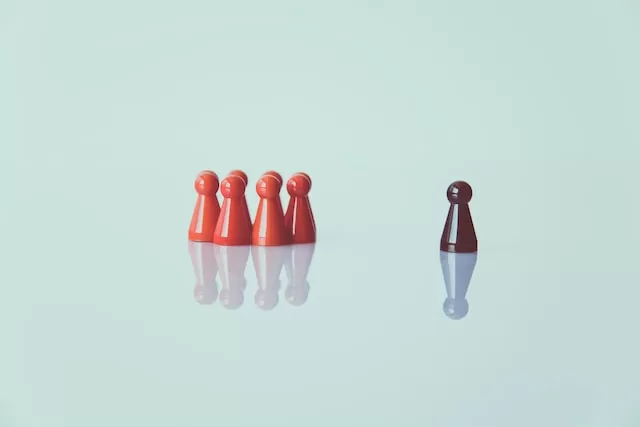A stigma is a negative belief about a group of people. This can be based on their race, ethnicity, religion, or social class. A stereotype is a simplified and often inaccurate belief about a group of people. This can also be based on their race, ethnicity, religion, or social class.
What is stigma?
Stigma is a mark of shame, disgrace, or disapproval that is attached to a person or group. It is often the result of prejudice or ignorance and can be hard to shake off.
What is a stereotype?
A stereotype is a widely held but fixed and oversimplified image or idea of a particular type of person or thing. Stereotypes are oversimplified beliefs about groups of people. They can be based on race, ethnicity, gender, nationality, religion, or any other characteristic. While stereotypes can be negative or positive, they are usually inaccurate and misleading.
Stigma and stereotype: How do they differ?
Stigma refers to a negative social label that is attached to a person or group of people. This can be based on their race, gender, age, disability, etc. Once someone is labelled with a stigma, they are often seen as less than human and are discriminated against. On the other hand, stereotypes are oversimplified ideas about groups of people that are not based on reality. They can be positive or negative, but they are not as harmful as stigmas because they are not used to justify discrimination.
What are the differences between stigma and discrimination?
Discrimination is when you are treated unfairly because of who you are. This can happen in lots of ways, like if you’re not given a job because of your race, or if you’re not allowed to rent an apartment because of your religion. Discrimination is illegal in many places, but it still happens.
Stigma is a lot like discrimination, but it’s more about how people think about you, rather than how they treat you. For example, if someone has a mental illness, people might think that they’re dangerous or lazy. That’s stigma. People with mental illness often face discrimination too, but stigma is a separate issue.
What are examples of stigma and stereotypes?
There are many examples of stigma that exist in our society. Some of these include:
– Racism
– sexism
– Homophobia
– Ageism
– ableism
These are just a few examples of the many types of stigma that exist. Each one can have a profound impact on the lives of those who experience them.
While stigmas are always negative, stereotypes can be either positive or negative. Positive stereotypes can be just as harmful as negative ones because they can lead to oversimplification and pigeonholing. Just as importantly, they can also create false expectations and pressure for those who don’t fit the stereotype.
Some examples of stereotypes include:
• The model minority myth: the idea that all Asians are smart and successful
• The “strong black woman” trope: the belief that black women are always strong and never need help
• The “lazy Mexican” stereotype: the belief that Mexicans are all lazy and unemployed
What is a person’s stigma?
When we talk about stigma, we are referring to the negative attitudes and beliefs that a society or group of people have about a particular person or group of people. This can be based on race, gender, sexuality, religion, or any other number of factors. These negative attitudes can lead to discrimination and exclusion from social, economic, and political opportunities.
What is the simplest meaning of stereotype?
A stereotype is an oversimplified, fixed, and often biased image or idea that people have about a group or individual.
What is the biggest cause of stigma?
The biggest cause of stigma is ignorance. People are afraid of what they do not understand, and they often judge those who are different from them. This can lead to discrimination and isolation.
What are the 4 types of stigmas?
There are four types of stigmas:
Achievement: This type of stigma is based on the belief that someone with a particular trait or condition is not capable of achieving success. This can be due to a lack of ability or intelligence, or because the person is seen as lazy or unworthy.
Affiliative: This type of stigma is based on the belief that someone with a particular trait or condition is not worthy of being part of a group or community. This can be due to a lack of social skills, or because the person is seen as dangerous or untrustworthy.
Benevolent: This type of stigma is based on the belief that someone with a particular trait or condition needs help or pity. This can be due to a mental illness, physical disability, or because the person is seen as poor or homeless.
Pervasive: This type of stigma is based on the belief that someone with a particular trait or condition is somehow different from everyone else and therefore should be avoided. This can be due to an ethnic minority’s status, sexual orientation, or because the person has a criminal record.
What factors influence stigma?
Many factors can influence stigma. Some of the most common include:
Social factors: Things like race, gender, and social class can all play a role in how people are stigmatized.
Individual factors: A person’s personality, mental health, and physical appearance can also be contributing factors.
Situational factors: The context in which someone is encountered can also affect how they are perceived. For example, if someone is encountered in a hospital setting, they may be more likely to be seen as sick or weak.
Historical factors: Stigma can also be shaped by historical events or attitudes. For example, the stigma around mental illness may have been influenced by past attitudes that mental illness was not real or that it was something to be ashamed of.
What are the 3 sources of stereotypes?
There are many sources of stereotypes, but three of the most common are the Media, Personal experiences, and Cultural influences.
The media is a common source of stereotypes. TV shows, movies, and even news programs can all contribute to the formation of stereotypes.
Personal experiences can also lead to the development of stereotypes. If someone has a negative experience with a certain type of person, they may be more likely to form a stereotype about that group.
Cultural influences, such as family or friends, can also play a role in shaping our views of others.
Photo by Markus Spiske on Unsplash










1 comment
It makes clear the difference between stigma and stereotype, and even discrimination.